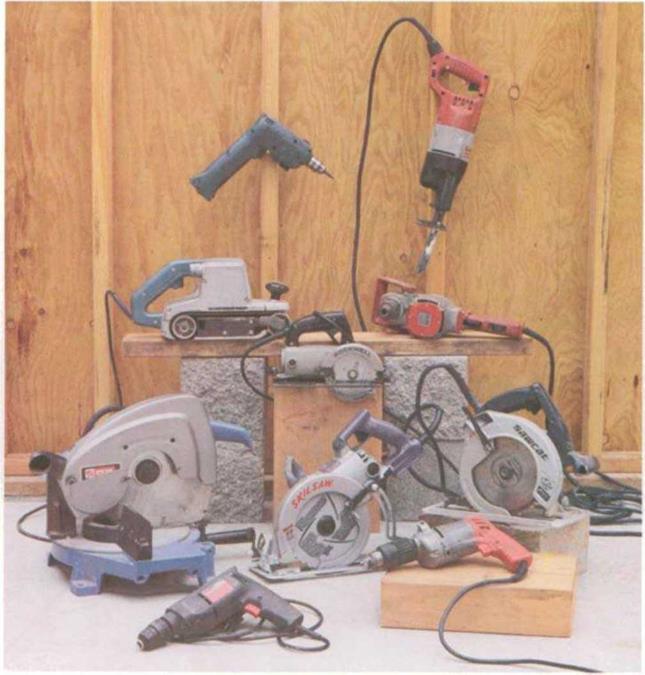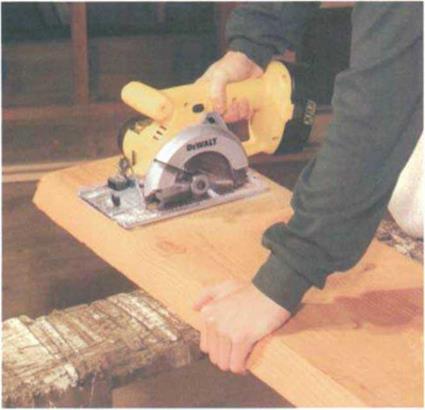POWER TOOLS
|
|
Power tools have revolutionized the way houses are built. Some of the tools common on the job site include (clockwise from bottom) 3/s-in. drills, miter saws, belt sanders, cordless drills, reciprocating saws, У2-ІП. drills, trim saws, and circular saws (worm drive left, sidewinder right).
Tools aren’t like stretch socks where one size fits all. A saw that has the right combination of power, weight, and feel for one carpenter may be the wrong choice for another. But here are a few tips that should help you make an educated choice when it comes time to invest in a power tool.
• The tool should be comfortable to use, so (if possible) try before you buy. Do some homework, and try out a few to see how each one feels.
|
An 18-volt cordless circular saw can make short work of 2x stock. |
• I also recommend asking people who use tools daily—like other carpenters or contractors—which models and makes they prefer. For these folks, durability is a big issue, and they won’t mind telling you which tools have lasted and which ones haven’t. It also helps to read magazines that research and evaluate different tools (Fine Homebuilding magazine is a good place to start).
• Buy the best quality you can afford. In general, steer away from homeowner-grade tools, which won’t stand up to heavy-duty job site use. Professional-grade tools cost more, but they are more durable, more powerful, and easier and safer to use than homeowner grade.
• Many portable power tools are available in cordless versions with rechargeable batteries. The first cordless tools I used years ago were actually playthings for those who loved gadgets. This is no longer true. Today’s cordless tools are used by professional workers in every trade. These tools have plenty of power and allow carpenters to move around the job site without the frustration of having to pull an extension cord around behind them.
• Almost every carpenter I know uses a cordless drill/screwdriver daily. In addition, now there are cordless jigsaws, reciprocating saws, and circular saws that have enough power for daily professional use. The new 18-volt systems have enough juice to power a cordless saw through 2x stock, and with a spare battery and charger on site, the only break you’ll have to take is for lunch.
The first time I had my hands on a circular saw was in 1951, when power tools were first becoming readily available. What a sense of wonder it gave me. That stack of framing lumber that used to take me hours to cut with a handsaw could now be cut in minutes with the circular saw I was holding.
In my lifetime, carpenters have gone from building an entire house in a few months using hand tools to building the same house in a matter of weeks—even days in some cases—using power tools. The power-tool revolution has changed how carpenters work. Today, power tools are used in every aspect of carpen
try, so one of the tasks of a beginning carpenter is to learn a little bit about these tools, including how to choose them and how to use them safely.
In this chapter I’ll focus on the most common tools used on the job: circular saws, portable table saws, miter saws, reciprocating saws, jigsaws, drills, pneumatic nailers, routers, and sanders. Because practice is essential to gaining familiarity with any tool, at the end of the chapter I’ll give you plans and instructions for building a workbench using some of the power tools discussed in the chapter.








Leave a reply